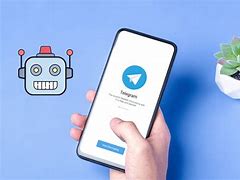
Advantages Of Telegram Auto Reply Messages
To welcome the customers with a warm welcome message, you can go with the Telegram auto-reply message service. The business will have many benefits associated with this amazing option provided by Telegram:
Enhance business accessibility
No matter what time, you can enhance your customer support. Telegram auto-reply messages provide any time support to customers which makes the business interesting to customers.
Sending Messages to the Chat GPT API
Once the Flask API receives a message from the Telegram bot, it will extract the user's question or prompt. The extracted text will be passed to the Chat GPT program by making an HTTP request to the Chat GPT API. The Chat GPT API will process the input and provide a response, which we will retrieve and further process.
Interacting with Chat GPT using Python
To interact with Chat GPT using Python, we will utilize the OpenAI API and the requests module. By making API requests to the Chat GPT model, we can pass in user prompts as input and receive responses as output. The Python program will handle the communication and extract the response from the API's JSON output. By running the program, we can see how Chat GPT responds to different user questions and prompts.
Q. What are the benefits of Telegram auto-reply messages?
A. The setup of auto-reply in a telegram account gives many benefits to your business whereas:
Manage fast response time
When a business will not be in business hours and customers try to contact them. They will get instant responses through Telegram auto-reply.
Running the Python Program
The Python program that interacts with Chat GPT and handles user prompts requires the requests module. By executing the program, it will prompt you to enter any questions or prompts. The program will process the input, make a request to the Chat GPT API, and retrieve the response. The response will be displayed, demonstrating how to use Python to interact with Chat GPT.
Build an Auto Reply Telegram Bot with ChatGPT APIs
In this lesson, we will explore how to use Python to Interact with Chat GPT and Create a Telegram bot that can handle and respond to user queries. Chat GPT is a powerful language model developed by OpenAI that can generate human-like responses given input Prompts. By leveraging Chat GPT and a Telegram bot, You can automate the process of answering frequently asked questions or providing information to users. This tutorial will guide you through the process of setting up the necessary tools and implementing the functionality.
Build customer loyalty and satisfaction
Customers will not experience any surprises if you use a clear auto-reply message to let them know what to expect from your staff.
You probably use Telegram auto-reply messages a few times a day to speak with friends and family if you’re like most people. But did you know you could use the app to send pre-written replies to messages?
The app will then continuously monitor for incoming Telegram messages and send a reply message if the text meets any of the rules you’ve put up. If not, the chat message will be disregarded.
When you are unable to log into your Telegram account, the auto-reply option might be of tremendous assistance. Even better would have been if the auto-reply function had been built right into the Telegram client itself. However, since Telegram does not have this capability, you can use fantastic apps.
This article will demonstrate how to configure Telegram’s auto-reply feature so that whenever someone sends you a message, Telegram will send you a notification in your chat window (along with the message itself), saving you the time of having to put your hands away from the keyboard.
Creating a Telegram Bot
To create a Telegram bot, you will need to use the Telegram BotFather service. BotFather is a special bot provided by Telegram that allows you to create and manage bots. Once you create your bot using BotFather, you will receive a bot token, which is essential for interacting with your bot programmatically. We will use the bot token to configure our Flask API and enable the bot to receive messages.
A webhook is a way for Telegram to send received messages to your Flask API. By configuring a webhook for your bot, you can ensure that incoming messages are forwarded to your defined endpoint. To set up a webhook, you will need a publicly accessible URL where your Flask API is hosted. In this tutorial, we will use a tunneling service called ngrok to make our local Flask API accessible by Telegram.























